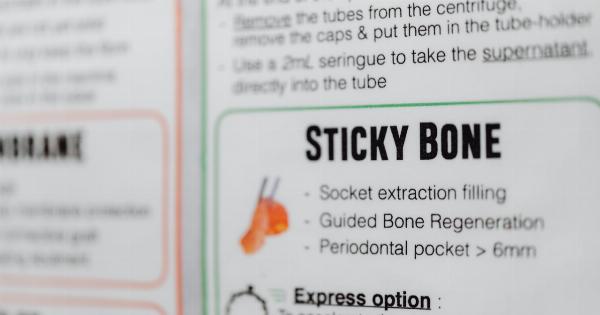Aortic valve stenosis is a common heart condition that occurs when the aortic valve narrows and restricts blood flow from the heart to the rest of the body.
This condition can lead to serious complications and requires prompt identification and treatment. To diagnose aortic valve stenosis, healthcare professionals look for three essential “bells” or key indicators.
These bells include symptoms, clinical signs, and diagnostic tests, which all play a crucial role in accurate identification and management of this condition.
Symptoms
The first “bell” in identifying aortic valve stenosis is the presence of specific symptoms. While some individuals may not experience any symptoms initially, as the condition progresses, the following signs may become evident:.
- Chest pain or discomfort: Patients may complain of chest pain, pressure, or a sense of tightness, which can be triggered by physical exertion or emotional stress.
- Shortness of breath: As the heart struggles to pump blood efficiently, patients may experience breathlessness, especially during physical activity or when lying flat.
- Fatigue: A decrease in blood flow can lead to decreased energy levels and overall fatigue.
- Dizziness or fainting: In advanced stages of aortic valve stenosis, reduced blood flow to the brain can cause dizzy spells or even loss of consciousness.
- Heart palpitations: Irregular heartbeats or the sensation of a rapid, racing heart may occur due to the heart compensating for the restricted valve.
Clinical Signs
(Note: A thorough physical examination by a healthcare professional is crucial in identifying clinical signs of aortic valve stenosis.).
The second “bell” of aortic valve stenosis involves the presence of specific clinical signs during a physical examination. These signs include:.
- Murmur: Aortic stenosis often produces a heart murmur that can be heard with a stethoscope. The murmur is typically described as a harsh, systolic, crescendo-decrescendo murmur that radiates to the carotid arteries in the neck.
- Weak or absent pulses: In severe cases, the pulse may be weak or absent in the arterial pulses, such as the radial or femoral pulses.
- Signs of heart failure: In advanced stages, patients may exhibit signs of heart failure, such as elevated jugular venous pressure, swelling in the legs and ankles (edema), and the presence of third or fourth heart sounds.
Diagnostic Tests
The third “bell” in diagnosing aortic valve stenosis involves specific diagnostic tests that confirm the presence of this condition and assess its severity:.
- Echocardiography: This non-invasive test uses sound waves to create images of the heart. It can visualize the aortic valve and determine the degree of stenosis, as well as assess the size and function of the heart chambers.
- Electrocardiogram (ECG): An ECG measures the electrical activity of the heart. In aortic valve stenosis, an ECG may show evidence of left ventricular hypertrophy or abnormal heart rhythms.
- Cardiac catheterization: This invasive procedure involves the insertion of a thin tube into a blood vessel to assess the pressure and blood flow through the heart and the aortic valve.
- Exercise stress test: This test evaluates how the heart responds to physical exertion and can help identify any exercise-induced symptoms or abnormalities.
Treatment and Management
Once aortic valve stenosis is accurately diagnosed, appropriate treatment and management strategies can be implemented to prevent further complications.
The severity of the condition, symptoms, and overall health of the patient play a significant role in determining the appropriate course of action. Treatment options may include:.
- Medical management: Medications may be prescribed to manage symptoms, such as diuretics to reduce fluid retention or beta-blockers to control heart rate and blood pressure.
- Aortic valve replacement: When the stenosis becomes severe and symptomatic, surgical replacement of the aortic valve is often necessary. This can be done through traditional open-heart surgery or minimally invasive techniques.
- Transcatheter aortic valve replacement (TAVR): In select cases, TAVR may be a suitable option for patients who are considered high-risk for open-heart surgery. TAVR involves the placement of a new valve using a catheter inserted through a blood vessel.
Regular monitoring and follow-up visits with a healthcare professional are vital to ensure the effectiveness of treatment and to address any potential complications promptly.





























